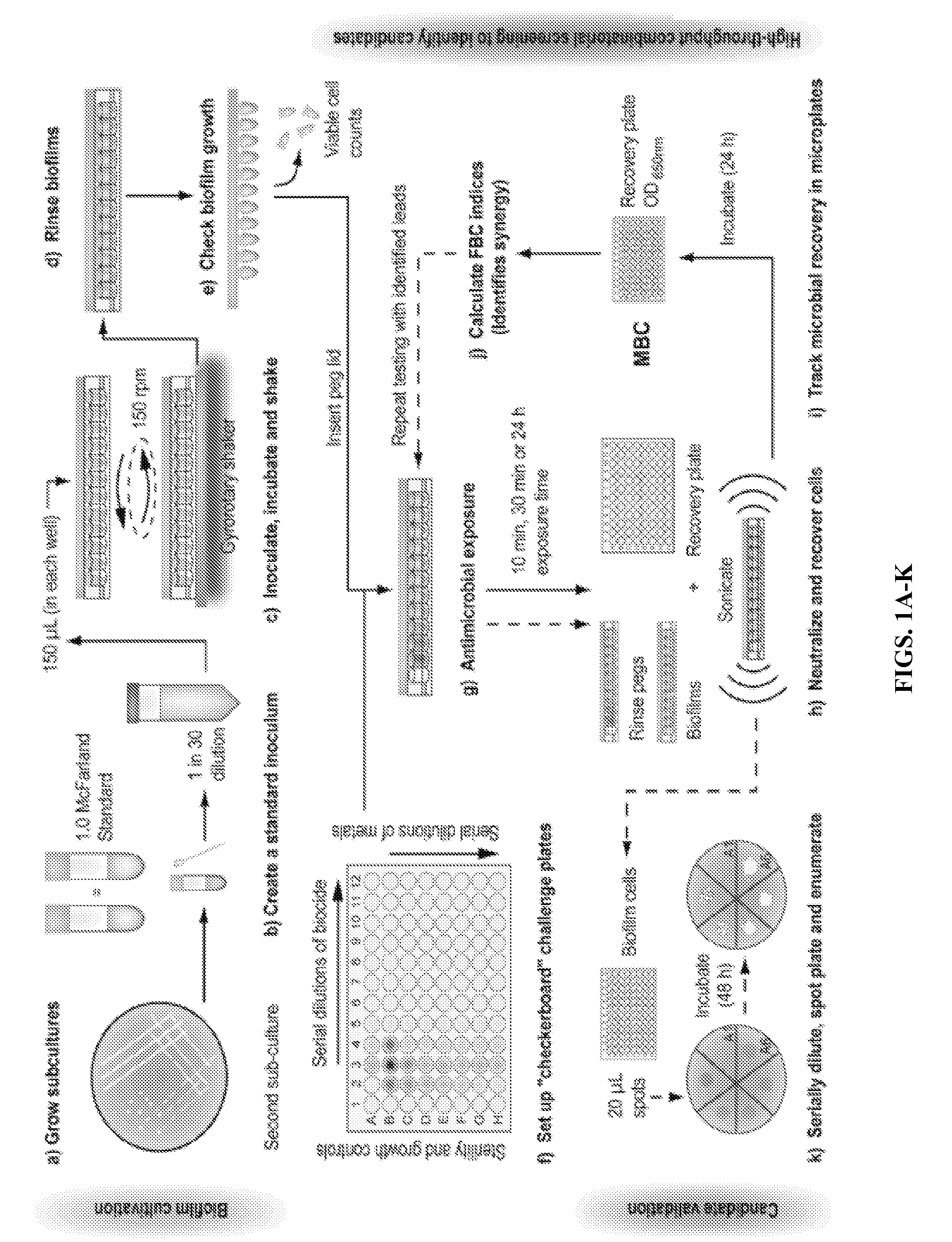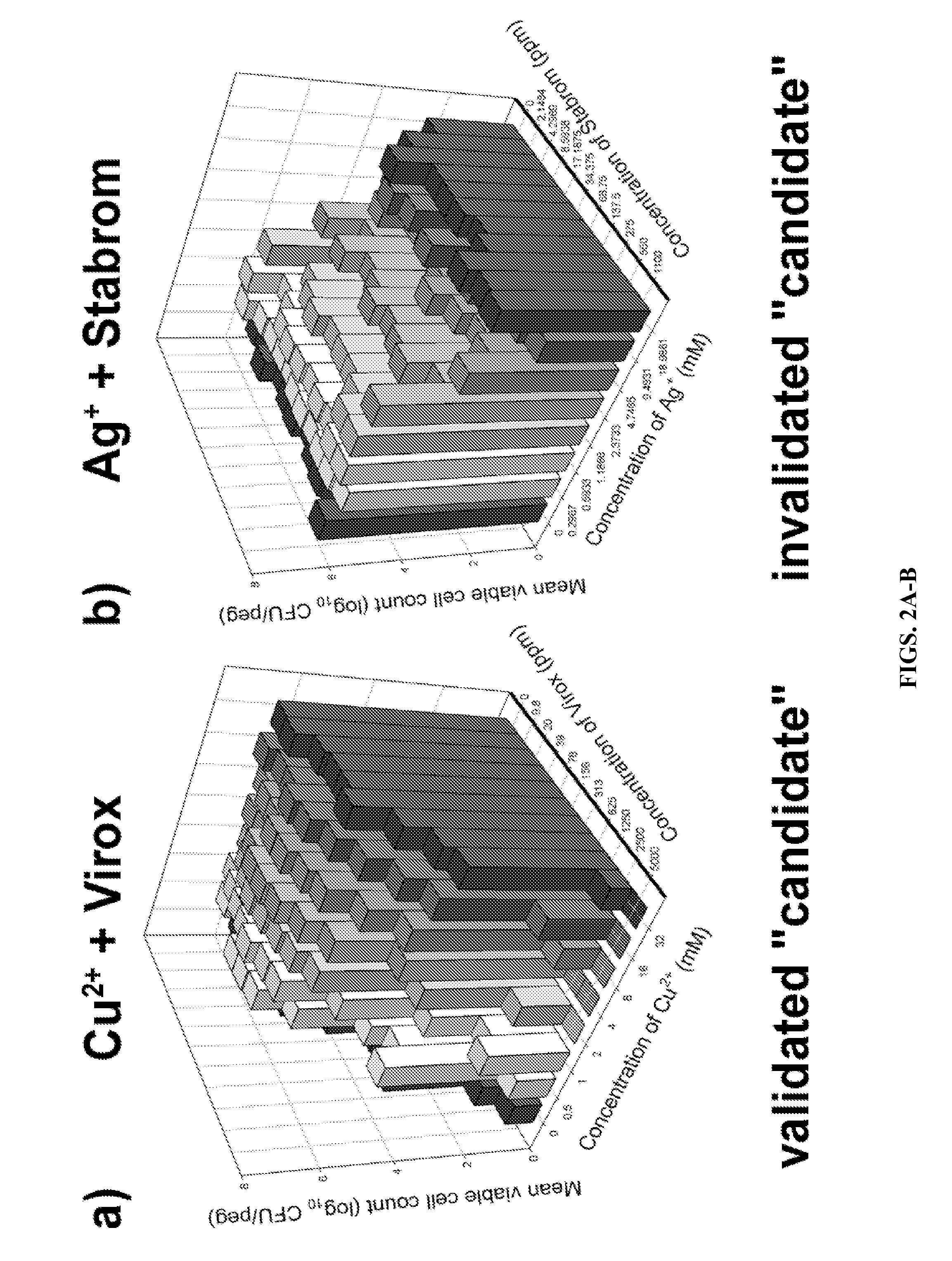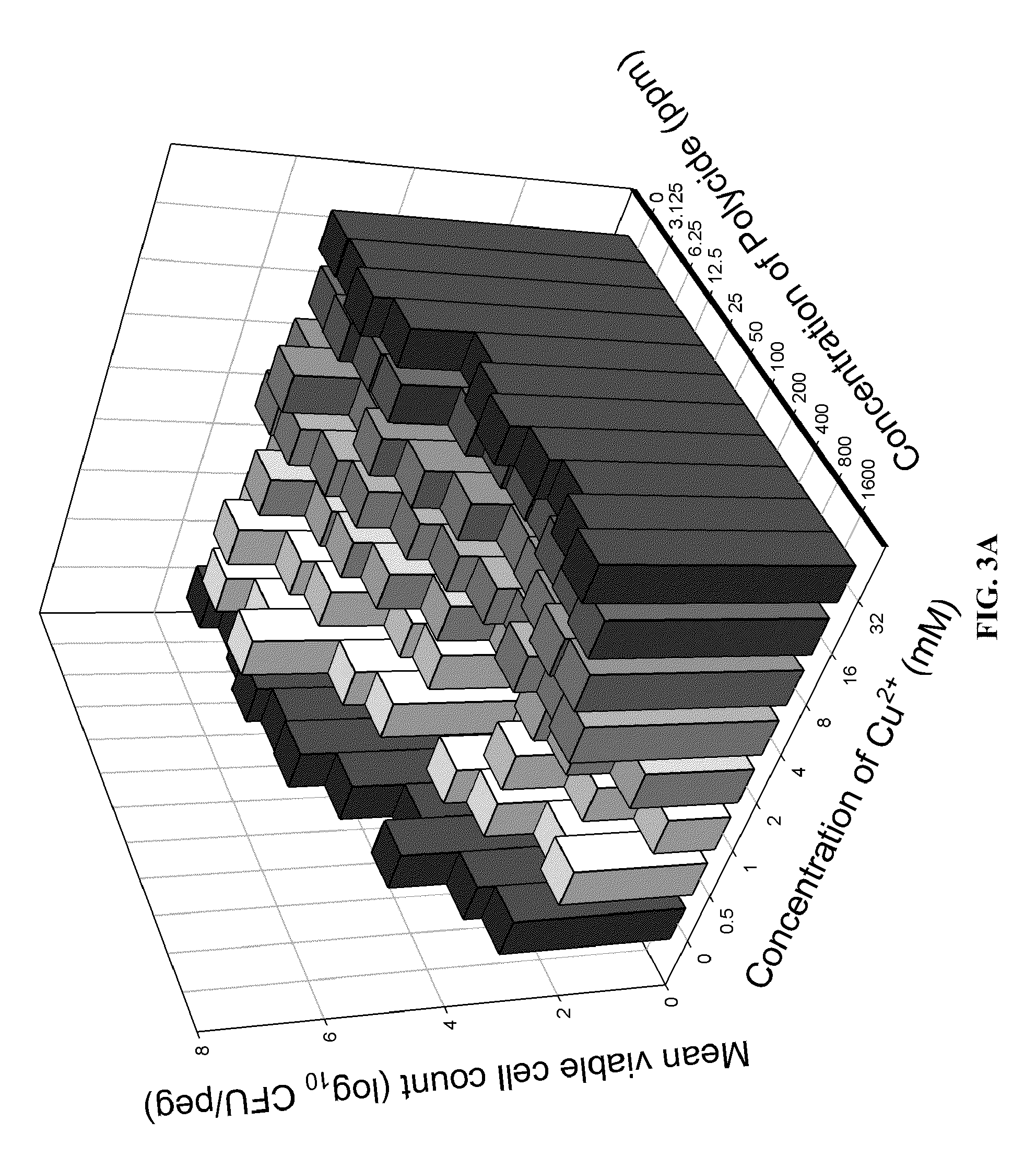Combination of Copper Cations with Peroxides or Quaternary Ammonium Compounds for the Treatment of Biofilms
- Summary
- Abstract
- Description
- Claims
- Application Information
AI Technical Summary
Benefits of technology
Problems solved by technology
Method used
Image
Examples
example 1
Materials and Methods
[0085]Strains and growth media. All of the microbial strains used in this study are summarized in TABLE 1 and all were stored at −70° C. in Microbank™ vials (ProLab Diagnostics, Toronto, Canada) according to the manufacturer's directions. These organisms were cultured on tryptic soy agar (TSA, EMD Chemicals Inc., Gibbstown, USA) and incubated at 30° C for 24 to 48 h. Biofilms of all of the organisms used in the invention were cultivated in tryptic soy broth (TSB, EMD Chemicals Inc.) and all serial dilutions were performed using 0.9% NaCl. Susceptibility testing was performed in 10% TSB diluted with either 0.9% saline (NaCl) or double-distilled water (ddH2O), as indicated throughout this disclosure. As the exception, Salmonella cholerasuis ATCC 10708 was cultivated in cation-adjusted Mueller-Hinton broth (CA-MHB, EMD Chemicals, Inc.) and tested in 25% CA-MHB that had been diluted with 0.9% NaCl. For microaerobic conditions, P. aeruginosa was sealed tightly in 1.0...
example 2
High-throughput Susceptibility Testing
[0104]The inventors conducted a high-throughput screen (FIGS. 1A-K) to identify combinations of antimicrobial agents that might possess anti-biofilm activity against P. aeruginosa ATCC 15442 (a strain used for the regulatory testing of hard-surface disinfectants). Here, checkerboard arrangements of antimicrobials in 96-well microtiter plates were used to examine 4 classes of biocides (QACs, halides, peroxides and alcohols, at 10 different concentrations each) alone or in combination with 6 different metal cations and oxyanions (Cu2+, Ag+, Al3+, SeO32−, Zn2+ as well as a proprietary silver oxysalt, at 7 different concentrations each). Additionally, the inventors examined three different exposure durations (10 min, 30 min and 24 h). When completed, this high-throughput screening process evaluated a total of 5307 unique combinations of agents, concentrations and exposure times. For simplicity, these initial results were categorized by metal-biocide...
example 3
Time-and Concentration Dependent Killing of P. aeruginosa Biofilms by Cu2+ and Polycide®
[0108]The guidelines set by the Association of Official Analytical Chemists (AOAC) suggest that to demonstrate antibacterial efficacy of novel compounds for use as disinfectants, susceptibility testing should be conducted using double distilled water (ddH2O) to dissolve the antimicrobials. The AOAC also suggests that cell survival should be evaluated after 10 min and 30 min exposure. The inventors performed these assays and these data are presented in FIG. 3A and FIG. 3B, respectively. In addition to these assays, the inventors also examined biofilm cell survival in the presence of rich medium (the contents of which may decrease the efficacy of some metal cations and QACs via unwanted chemical reactions). In this case, the inventors dissolved the antimicrobials in 10% TSB-0.9% NaCl and evaluated the number of surviving cells in biofilms after 10 min, 30 min and 24 h exposure (FIG. 3C, FIG. 3D and...
PUM
 Login to View More
Login to View More Abstract
Description
Claims
Application Information
 Login to View More
Login to View More - R&D
- Intellectual Property
- Life Sciences
- Materials
- Tech Scout
- Unparalleled Data Quality
- Higher Quality Content
- 60% Fewer Hallucinations
Browse by: Latest US Patents, China's latest patents, Technical Efficacy Thesaurus, Application Domain, Technology Topic, Popular Technical Reports.
© 2025 PatSnap. All rights reserved.Legal|Privacy policy|Modern Slavery Act Transparency Statement|Sitemap|About US| Contact US: help@patsnap.com



